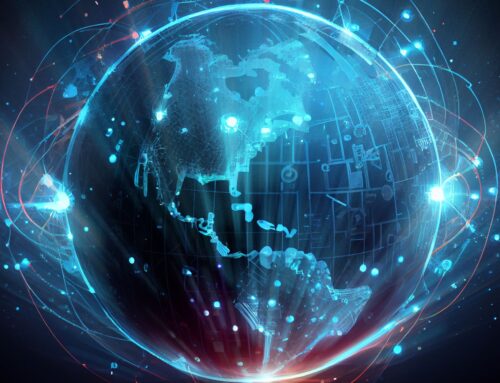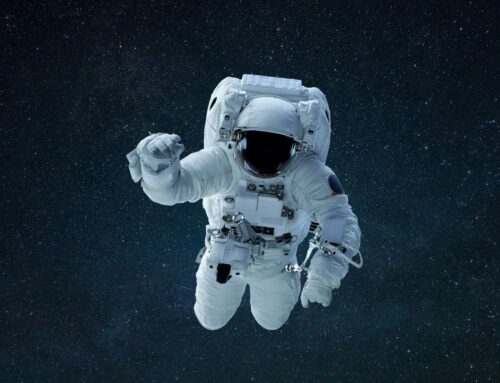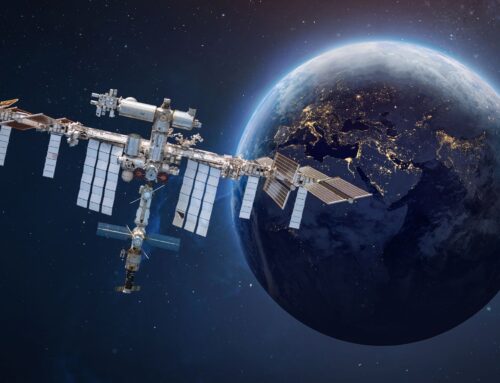For some, it seems questionable that humans are on the threshold of journeying deeper into space while back on Earth, we face challenges like climate change and battling with the Coronavirus pandemic among other challenges.
It’s not simply satisfying a compulsion to explore and learn that space provides.The industry has helped to provide a substantial and positive impact our planet and the people on it.
The Distinct Three-fold Power of Satellite Technologies
Satellite Communications
Perhaps the most powerful and impactful technology in space innovations remains the many functions of satellites. We use it in our daily lives, whether it’s posting an Instagram story, looking up the weather forecast, or streaming TV. Giving us access to these phone and internet services at almost any location on Earth, Satellite Communications are one aspect of how space technology can improve access to connectivity and education. During disaster recovery, satellite communications are crucial. Storm damage often means local communication systems need repair like inflatable communication antennas that link to satellites to allow communities and recovery efforts to operate. In the aftermath of Hurricane Maria in Puerto Rico, cellular service was down. Sprint teamed up with Gilat (an end-to-end satellite connectivity solution provider) that offered satellite backhaul with the flexibility to bring communications into hard-hit areas using Fly Away Kits (FAKs) and SatCOLTs (Satellite Cell on Light Trucks) that provide cellular, LTE and IP data services during times of emergency and disaster.
Satellite Positioning
The global coverage that satellites offer us is profound. Among satellites many functions, satellite positioning allows us to track endangered species. By attaching a tracking transmitter to animals with location information from positioning satellites, scientists can track animals and use that information to make informed decisions and better policies that help protect these animals from environmental hardship and poaching. For instance, we can track the migratory patterns of turtles and see how climate change is negatively impacting their feeding, mating and hatching seasons.
Environmental Positioning
Currently, there are 150 environmental positioning satellites, or Earth observation satellites, that are orbiting our planet. In the meantime, the private sector is adding to that number. Through this technology, we have a glimpse into remote corners of the world. We can examine where deforestation is occurring, water levels and which waterways are polluted, and the status of the melting ice caps across the globe. This monitoring allows us to prepare for how we should respond to the climate change epidemic.
Environmental imaging and positioning can also aid humanitarian efforts, like hunger. It identifies crop yield by pixel, giving farmers information about when is the right time to harvest, which can be increasingly difficult due to climate change’s oscillating weather patterns. When imaging land, spectral bands compile data in a vegetation index that gives crop health and productivity. Only satellites are capable of capturing such land images over Earth’s vast locations and characteristics.
Microgravity Research
Microgravity research has given Earth’s citizens an invaluable knowledge of the human body and how to treat it. In the microgravity of space, astronauts deal with health issues like osteoporosis, loss of muscle mass, and nausea. To mitigate these effects, scientists on the International Space Station perform investigations that affect human health. The research done has offered insights into aging, trauma, disease and environmental impacts both in space and on Earth. Breakthroughs in bacterial behavior and innovative wound-healing techniques have offered growth in healthcare.
For instance, we have improved vaccines because of research in space. Ground research indicated that bacteria, specifically Salmonella, might become more pathogenic during spaceflight. When scientists studied them in space, they found a pathway for bacterial pathogens to become virulent. Researchers then identified the genetic pathway activated in Salmonella bacteria that allowed it to spread in microgravity. The research led to new studies of microbial vaccine development.
Technology for performing microgravity research in space also better helps us develop new healthcare innovations. Plasma-based devices have been used to create cold plasma therapy, which allows hospital patients to stay safe from infections. This tech spin-off from space hardware gets rid of bacteria without hammering human tissue to accelerate the process of wound healing. It also has practical applications that include treatment of various skin diseases, food hygiene and, as mentioned below, the purification of water in developing nations.
Additionally, the Canadian Space Agency’s heavy-lifting and maneuvering robotic arms on the space station inspired their use in diagnosing patients with breast cancer. Called the Image-Guided Autonomous Robot (IGAR), the arm is used inside an MRI machine to help accurately identify the size and location of the tumor. This allows surgeons to perform delicate, precise movements during biopsies, which were otherwise hard to perform.
Advances in telemedicine, disease models, psychological stress response systems, nutrition and cell behavior are just some other ways microgravity research has benefited human health back on Earth.
Water Filtration Systems
Across the globe, 750 million people do not have access to clean drinking water. Even in some parts of the United States, the world’s richest country, unfiltered chemicals and toxins permeate the water supply. Reflecting the UN’s 17 sustainable development goals, clean water is essential to sustain life and space technology has given us ways to process our water. As astronauts went to space, it was clear having enough clean water and similar supplies were a massive barrier to space exploration. NASA solved the problem by recycling excreted water through filtration systems, utilized through iodine and cartridge filters. These systems are now standard, adapted for commercial companies and residential use. We can also look to partnerships between NASA technology and aid organizations to learn how effectively space research can adapt to solve global problems. Commercial companies have offered aid and disaster relief to communities globally. The Water Security Corporation, along with other organizations, has launched systems using NASA’s technology all over the world.
Technology from space is rapidly evolving, allowing for scientists, engineers and researchers on Earth to develop tools and create more easily sustainable ways of living here on Earth. As we explore new planets, more technologies and innovations (and even business models) will seek to inform how we react to challenges on Earth. As a worldwide community, we can create less waste, better understand the dynamics of the Earth’s climate, and remember to honor life on our home planet all because of the power and technological tools of space exploration.






